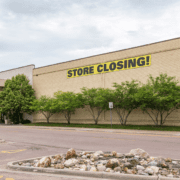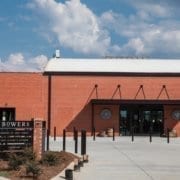The Impact of the Craft Beer Boom on Commercial Real Estate
Beer is one of the oldest and most consumed alcoholic beverages worldwide. The global beer market is projected to be valued at $658,354 million by 2025, driven by increases in disposable income, changing consumer preferences, the rise of a more experience-based culture, and changes in how drinking is perceived and accepted socially. A key trend shows beer drinkers seeking quality beverages over quantity, as evidenced by growth in both premium and craft categories. The market’s response? Craft breweries, which now hold over a quarter of market share with more than 6,000 operating in the US. As evidence of this growth and impact, 79% of legal drinking adults now live within 10 miles of a brewery, according to the Brewers Association.
So what impact is this craft beer boom having on commercial real estate in America? Read ahead to learn about how craft brewing is impacting the economy, is helping to reinvigorate markets nationwide, and can be a good indicator of an impending urban revitalization.
Craft breweries boost the local economy
Craft breweries represent large redevelopment opportunities and play a major role in economic development, community revitalization, and small-town revival, often acting as a leading indicator for growth and gentrification. Craft breweries impact local economies with jobs, sales taxes, and licensing fees. In 2014, craft breweries contributed $55B to the US economy, and much of the revenue generated finds its way back into local and state economies. Breweries also created over 424,000 jobs; those workers in turn spend their incomes on local retailers, restaurants, and housing. Craft breweries also help boost the value of neighboring properties.
Craft breweries attract other businesses
Craft breweries’ “economic ripple effects” often trickle down through the community and can be a catalyst to grow other artisanal businesses and help local companies flourish. For this reason, some states even offer subsidies, exemptions, grants, and tax breaks to attract breweries to their struggling industrial districts. According to Bisnow, “Local economies are feeling the buzz of craft beer not only with additional breweries, but also with retailers eager to cash in on the ripple effect. Bottle shops, growler shops, and self-serve beer shops are cashing in on the trend.” Breweries also help to boost local businesses by allowing food trucks and other vendors to park and sell on their property.
Craft breweries draw people
Craft breweries are effective at bringing both residents and tourists to a formerly under-the-radar location. Breweries can help bring that big-city feel to small towns, increasing the appeal of more rural areas that are experiencing declining populations. And craft breweries can address demand that is, for the most part, currently going unmet. Millennials with disposable income have come to expect the presence of a craft brewery and are willing to pay premium price for a niche product. They also appeal more to the younger generations who are taking part in the “foodie phenomenon” and who want quality, innovative beers and take advantage of more locally-sourced ingredients. Expansions that include tap and tasting rooms, restaurants, and/or event venues further drive growth of local businesses.
Craft breweries fill vacant properties
According to JLL, “As deindustrialization continues to play out across many cities in North America, the space left behind is supporting the growth of craft brewers”. Craft breweries currently occupy over 15 million SF of space, primarily in industrial areas, averaging 8,000 SF per location. Many rural and deindustrialized areas have an abundance of relatively cheap, underutilized real estate that is ideal for brewers since they already have infrastructure for water, sewage, and power in place. For one of these areas to be considered for a brewery, it must have a cost-effective supply of quality water, waste water treatment capacity, and a secure power source. Warehouses, manufacturing spaces, and abandoned mills in general are well-suited to the brewing business due to sturdy, thick construction that is conducive to better brewing. And these types of spaces also often come ready with distinctive architectural features, historical charm and character, and a gritty industrial feel, collectively offering a unique experience.
For the aforementioned reasons, craft breweries, unlike more traditional bars and restaurants, are not reliant on or tied to big cities to see success. They can choose locations based on the real estate pricing, customers, or even opportunity to influence future growth. Further impact on commercial real estate will be felt as existing breweries begin expansion initiatives, taking up larger footprints and contributing even more to their local economies.
You may also be interested in our blog about The Budding Marijuana Market and its Impact of Commercial Real Estate











